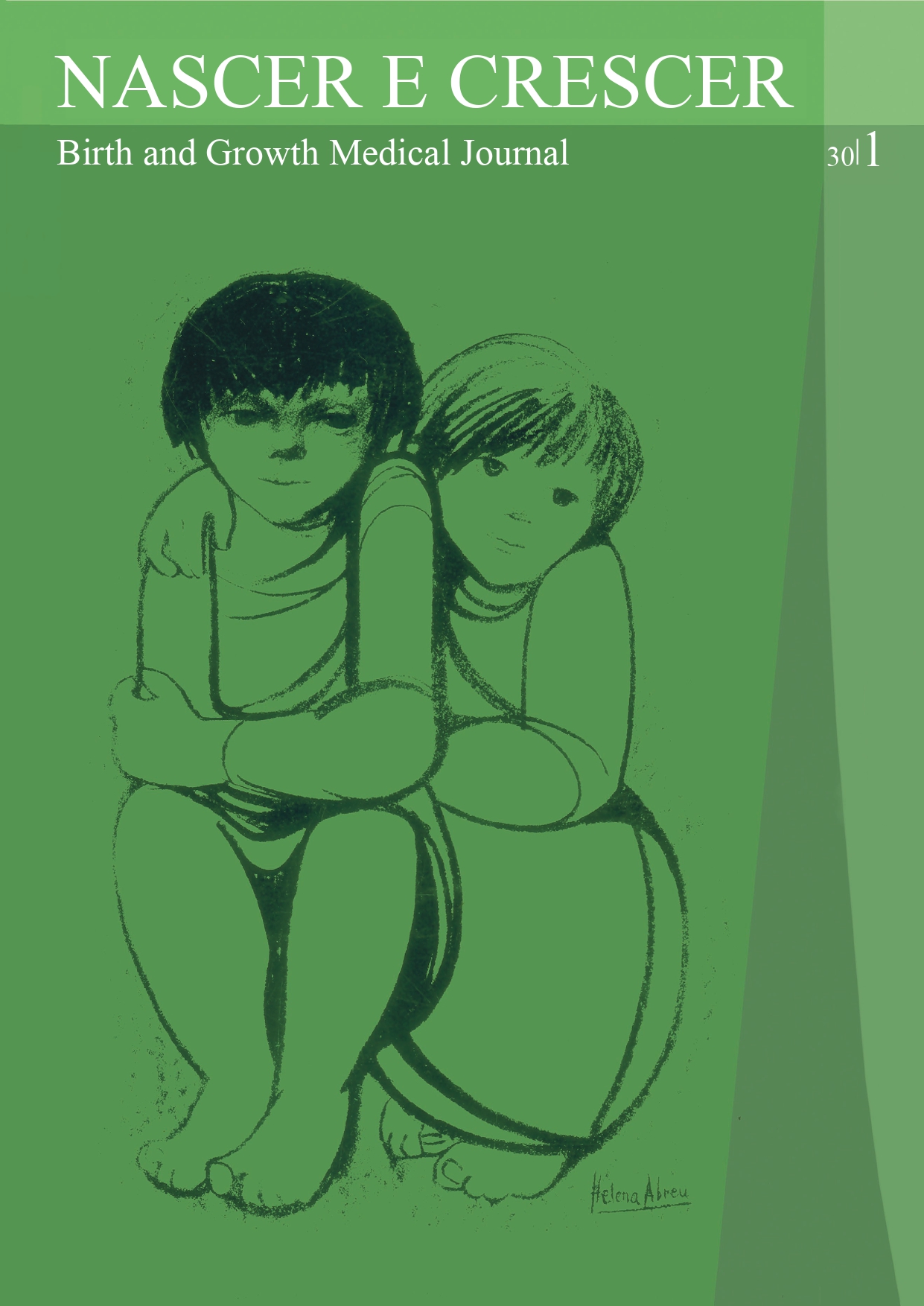Castleman disease. A rare diagnosis in childhood
DOI:
https://doi.org/10.25753/BirthGrowthMJ.v30.i1.18640Keywords:
Castleman disease, childhood, lymphadenopathyAbstract
Introduction: Castleman Disease (CD) is a rare polyclonal lymphoproliferative disorder characterized by massive growth of lymphoid tissue. The most common sites of disease are the chest, abdomen, neck, and axilla. Excisional biopsy is mandatory for diagnosis, and complete surgical resection the gold-standard treatment in unicentric CD. Case report: A ten-year-old girl was observed at the Emergency Department with sore throat and fever. Oropharynx examination revealed inflamed tonsils, with no exudates. Enlarged lymphadenopathy was palpable in the right supraclavicular fossa. Ultrasound revealed right supraclavicular lymphadenopathy with loss of adipose hilum and histopathologic assessment established CD diagnosis. Discussion/Conclusion: Lymphadenopathy is a common presentation in children, usually benign and self-limited. But it may also be a sign of underlying malignancy. Any lymphadenopathy in the supraclavicular fossa is worrisome and requires prompt investigation. CD diagnosis may be challenging, due its rare nature in childhood and nonspecific symptoms.
Downloads
References
Farruggia P, Trizzino A, Scibetta N, Cecchetto G, Guerrieri P, D’Amore ESG, et al. Castleman’s disease in childhood: report of three cases and review of the literature. Italian Journal of Pediatrics. 2011; 37:50.
Sopfe J, Endres A, Campbell K, Hayes K, Trout AT, Liang X, et al. Castleman disease in pediatrics: Insights on presentation, treatment, and outcomes from a two-site retrospective cohort study. Pediatr Blood Cancer. 2019; e27613.
Rabinowitz MR, Levi J, Conard K, Shah UK. Castleman disease in the pediatric neck: A literature review. Otolaryngol Head Neck Surg. 2013; 148:1028-36.
Fajgenbaum DC. Unicentric Castleman Disease. UpToDate 2019.
Talat N, Schulte KM. Castleman’s Disease: Systematic Analysis of 416 Patients from the Literature. The Oncologist. 2011; 16:1316-24.
Nguyen T. Approach to lymphadenopathy. November 2011. Available at: https://learn.pediatrics.ubc.ca.
Friedmann A. Evaluation and Management of Lymphadenopathy in Children. Pediatrics in Review. 2008; 29:53-60.
Gow KW. Pediatric Lymph Node Disorders. Medscape 2019.
Weinstock M, Patel N, Smith L. Pediatric Cervical Lymphadenopathy. Pediatrics in Review. 2018; 39:433-43.
King D, Ramachandra J, Yeomanson D. Arch Dis Child Educ Pract Ed 2014; 99:101–110.
McClain K. Peripheral lymphadenopathy in children: Etiology. UpToDate 2019.
Downloads
Published
How to Cite
Issue
Section
License
Copyright (c) 2021 Sara Monteiro Cunha, Sofia Vasconcelos, Cláudia Neto, Tereza Oliva, Miguel Salgado

This work is licensed under a Creative Commons Attribution-NonCommercial 4.0 International License.
Copyright and Authors' Rights
All articles published in Nascer e Crescer - Birth and Growth Medical Journal are Open Access and comply with the requirements of funding agencies or academic institutions. For use by third parties, Nascer e Crescer - Birth and Growth Medical Journal adheres to the terms of the Creative Commons License "Attribution - Non-Commercial Use (CC-BY-NC)".
It is the author's responsibility to obtain permission to reproduce figures, tables, etc. from other publications.
Authors must submit a Conflict of Interest statement and an Authorship Form with the submission of the article. An e-mail will be sent to the corresponding author confirming receipt of the manuscript.
Authors are permitted to make their articles available in repositories at their home institutions, provided that they always indicate where the articles were published and adhere to the terms of the Creative Commons license.


